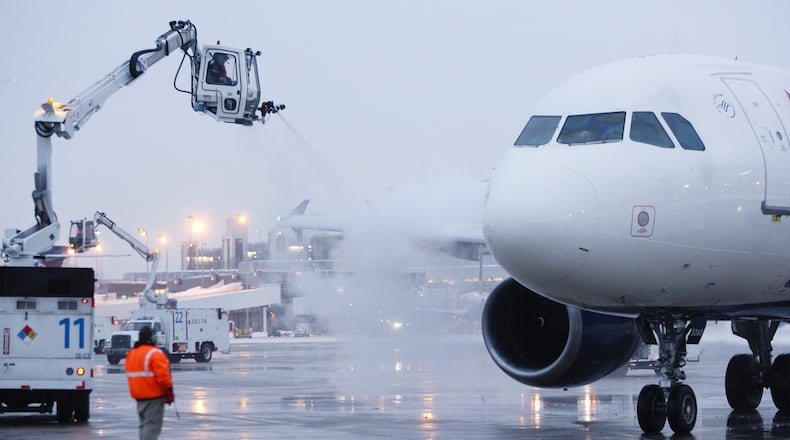Delta Air Lines is adding more de-icing vehicles at Hartsfield-Jackson International Airport, in a move to ease flight delays and cancellations in the winter months.
Atlanta-based Delta is adding 20 new de-ice trucks at the world's busiest airport, where it operates its largest hub.
Although snow is rare in Atlanta, when a storm hits that requires planes to be sprayed with de-icing fluid to safely take off, it can disrupt flights and leave thousands of travelers stranded.
VIDEO: More on Delta Air Lines
Delta typically operates more than 800 daily departures out of Hartsfield-Jackson in the winter. But during icy conditions when each plane needs to go through the procedure before departing, that can decrease significantly.
Last January, when a snowstorm hit Atlanta, icy conditions caused Delta to cancel 900 flights over two days. In the congested terminal, travelers hoping to get out waited in hours-long security lines.
The airline had 44 de-ice trucks, which lift workers in buckets into the air to spray down planes with neon green or orange glycol de-icing fluid. A large plane can be de-iced by four trucks at a time.
Delta “is prepared for de-icing from the fall through the spring,” said spokeswoman Lisa Hellerstedt. De-icing season has already started in Minneapolis and in Denver.
At Hartsfield-Jackson, Delta has a core de-icing group of 12 workers, and another 570 ground workers are also trained for de-icing. The company has two new de-ice simulators in an employee training room on Concourse B for workers to learn the technique.
De-icing specialists from snowy Delta hubs in Minneapolis and Detroit have helped train Atlanta de-icers. During the worst storms, a “Go Team” of Delta de-ice workers from other airports also fly in to help at Hartsfield-Jackson, which the company says can help reduce the time it takes to spray down planes.
In addition to orange de-icing fluid, Delta also uses a thicker Type IV green anti-ice fluid in Atlanta. In eight other airports, the airline is adding the Type IV fluid that can be sprayed onto a plane to prevent the build-up of ice.
That can reduce frustrating cancellations at busy airports where a plane goes for de-icing, then waits in a long line of planes to take off, only to get more ice accumulated on the wings. The buildup of ice on wings can disrupt the air flow around the wings and affect the aerodynamics of a plane, increasing drag and reducing lift.
In addition to the new equipment, Delta says it will soon use a new system for its ground controllers to track the de-icing process and monitor how long it takes. A plane covered in a thick layer of ice after being stuck overnight in a storm can take much longer to de-ice than a plane that’s only been in such conditions for an hour or two hour-long layover between flights.
Extra de-ice trucks can’t prevent all delays and cancellations. If the airport typically has some 120 flight departures an hour, it’s still a challenge to maintain that output when every plane must be de-iced before takeoff.
About the Author
Keep Reading
The Latest
Featured


